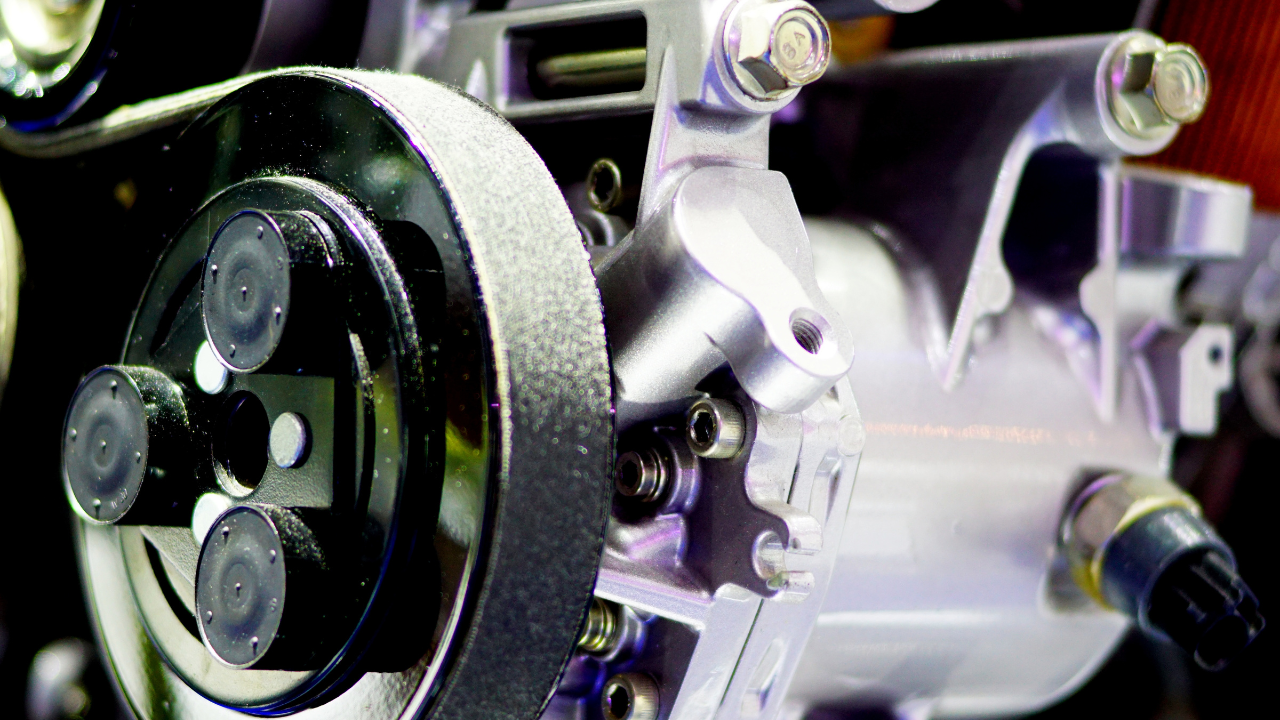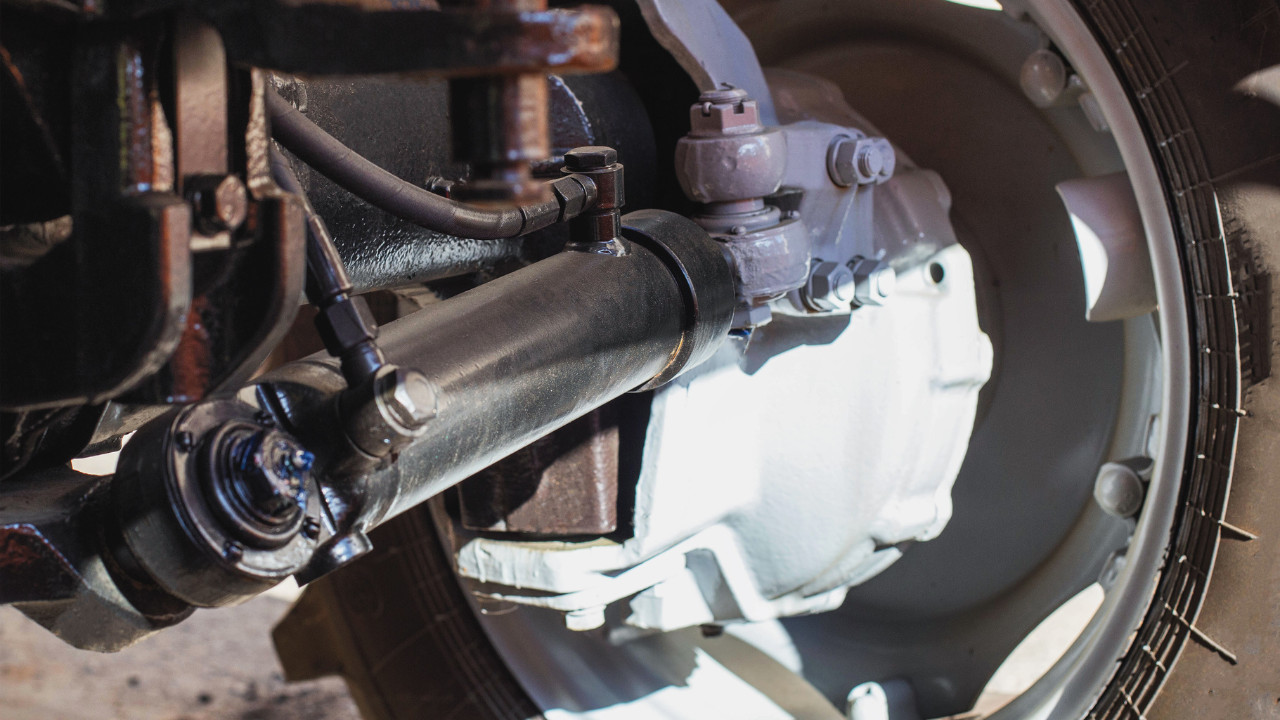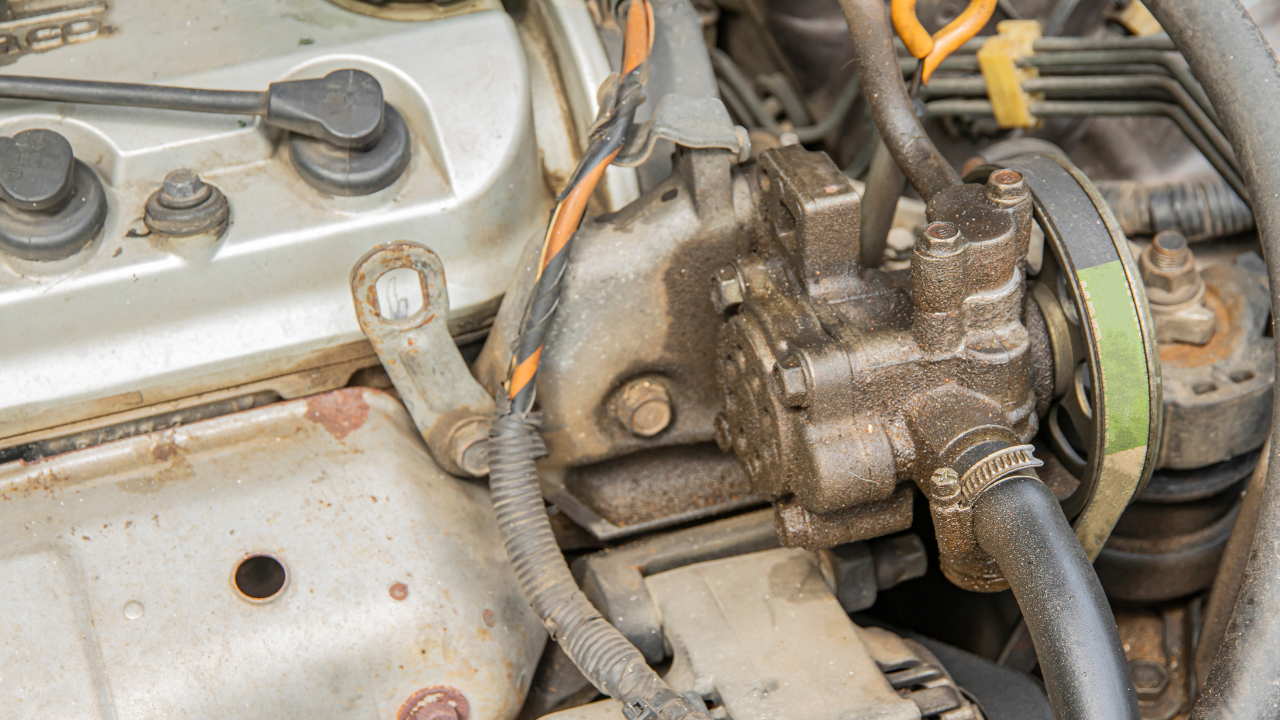A power steering system is an essential component of modern vehicles, providing drivers with the ease and control needed to navigate roads smoothly. However, when a power steering pump begins to leak, it can lead to a loss of power steering fluid, reduced steering performance, and potential damage to other parts of the system.
The good news is that fixing a leaking power steering pump is a manageable task that can be done with some basic tools and a bit of know-how. In this comprehensive guide, we will take you through the step-by-step process of diagnosing and repairing a leaking power steering pump, saving you time and money on costly repairs at a mechanic. Don’t let a leaking power steering pump ruin your ride. Reach out to Crossroads Helpline today and get back on the road with confidence!
Understanding the Power Steering Pump

Before diving into the repair process, it’s crucial to understand the role of the power steering pump in your vehicle’s steering system. The power steering pump is responsible for generating hydraulic pressure, which assists in turning the steering wheel with minimal effort. This pump is typically located at the front of the engine, connected to the steering rack or gearbox via hoses. When the pump develops a leak, it can result in fluid loss, leading to issues such as stiff steering or a noisy pump.
Step 1: Identify the Leak

The first step in fixing a leaking power steering pump is identifying the source of the leak. Start by locating the power steering pump under the hood of your vehicle. The pump is usually a cylindrical or square-shaped component with several hoses connected to it. Inspect the area around the pump for signs of wetness or dripping fluid. Common areas for leaks include the pump shaft seal, hose connections, and the pump reservoir.
Step 2: Gather the Necessary Tools and Materials
Before proceeding with the repair, gather the tools and materials you’ll need. This typically includes:
- Wrench set
- Power steering fluid
- Replacement seals or gaskets
- Jack and jack stands (if necessary)
- Container to catch old fluid
- Shop rags or towels
Having these items on hand will streamline the repair process and ensure you have everything you need within reach.
Step 3: Safely Lift the Vehicle (If Required)
Depending on your vehicle’s design, you may need to lift it to access the power steering pump more easily. Use a jack and jack stands to lift the front of the vehicle safely. Ensure the vehicle is securely supported before working underneath.
Step 4: Drain the Power Steering Fluid
With the vehicle safely lifted or parked on level ground, locate the power steering fluid reservoir. Place a container beneath the reservoir to catch the old fluid. Loosen the reservoir cap to release any built-up pressure, then carefully remove the cap. Next, use a turkey baster or syringe to extract the old fluid from the reservoir. Dispose of the old fluid according to local regulations.
Step 5: Remove the Power Steering Pump

Now it’s time to remove the power steering pump for inspection and repair. Start by disconnecting the hoses attached to the pump. Use a wrench to loosen the hose fittings, being careful not to damage them. Once the hoses are disconnected, remove any mounting bolts or brackets securing the pump to the engine block.
Step 6: Inspect for Damage
With the power steering pump removed, inspect it thoroughly for signs of damage or wear. Check the pump shaft seal for cracks or leaks, as this is a common area for fluid to escape. Additionally, inspect the hose connections for any signs of wear or deterioration. If the pump shows significant damage, it may need to be replaced entirely.
Step 7: Replace Seals or Gaskets
If the pump’s shaft seal or any gaskets are the source of the leak, it’s time to replace them. Carefully remove the old seal using a seal puller or similar tool. Clean the area around the seal thoroughly to ensure a proper seal with the new one. Install the new seal or gasket according to the manufacturer’s instructions, ensuring it is seated correctly.
Step 8: Reinstall the Power Steering Pump
Once the new seals or gaskets are in place, it’s time to reinstall the power steering pump. Position the pump back onto the engine block, aligning it with the mounting holes. Secure the pump in place using the mounting bolts or brackets, tightening them to the manufacturer’s specifications. Reconnect the hoses to the pump, ensuring they are tightened securely with a wrench.
Step 9: Refill with Fresh Power Steering Fluid
With the power steering pump back in place, it’s time to refill the system with fresh power steering fluid. Refer to your vehicle’s owner’s manual for the correct type of fluid to use. Slowly pour the new fluid into the power steering fluid reservoir, allowing any air bubbles to escape. Check the fluid level using the dipstick or sight glass on the reservoir, adding more fluid as needed to reach the proper level.
Step 10: Bleed the Power Steering System
Bleeding the power steering system is crucial to remove any trapped air and ensure proper operation. Start the engine and turn the steering wheel from lock to lock several times. This will help circulate the new fluid through the system and expel any air bubbles. Check the fluid level again and top up if necessary.
Step 11: Test for Leaks and Steering Performance
With the repair complete, it’s time to test the power steering system for leaks and performance. Start the engine and visually inspect the power steering pump and hose connections for any signs of leakage. Turn the steering wheel in both directions while stationary to check for smooth operation. Take the vehicle for a short test drive, paying attention to the steering feel and responsiveness.
Conclusion
Fixing a leaking power steering pump is a manageable task that can be done at home with basic tools and a bit of patience. By following this step-by-step guide, you can identify the source of the leak, replace any damaged components, and restore your vehicle’s power steering system to optimal performance.
Remember to always work safely and refer to your vehicle’s owner’s manual for specific instructions. If you’re ever unsure or uncomfortable with the repair process, it’s best to seek the assistance of a professional mechanic. With proper maintenance and care, your power steering system will continue to provide smooth and effortless steering for miles to come. Leaking power steering pump? No problem! Call Crossroads Helpline for a quick and effective solution.

